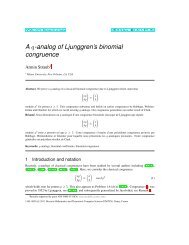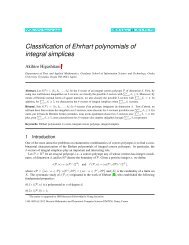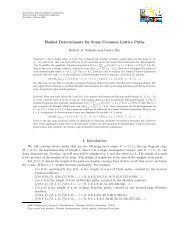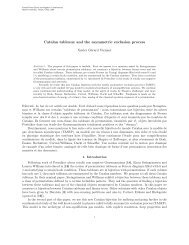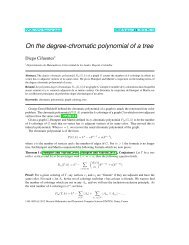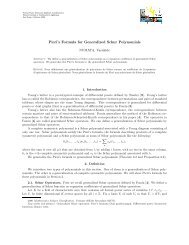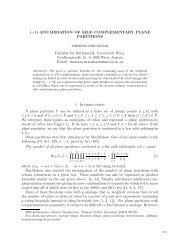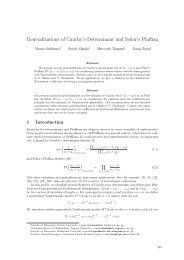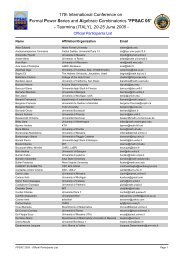Euler's partition theorem and the combinatorics of -sequences
Euler's partition theorem and the combinatorics of -sequences
Euler's partition theorem and the combinatorics of -sequences
You also want an ePaper? Increase the reach of your titles
YUMPU automatically turns print PDFs into web optimized ePapers that Google loves.
Theorem [Corteel,S 2004] Given positive integers s 1 , . . . , s n , <strong>the</strong><br />
generating function for <strong>the</strong> <strong>sequences</strong> λ 1 , . . . , λ n satisfying<br />
is<br />
λ 1<br />
s 1<br />
≥ λ 2<br />
s 2<br />
≥ · · · ≥ λ n−1<br />
s n−1<br />
≥ λ n<br />
s n<br />
≥ 0<br />
∑ s2 −1 ∑ s3 −1<br />
z 2 =0 z 3 =0 · · · ∑s n−1<br />
s 1 z 2<br />
z n=0 q⌈ s 2<br />
∏ n<br />
i=1 (1 − qb i )<br />
⌉+ P n<br />
i=2 z i<br />
∏ n−1<br />
i=2 qb i ⌈ z i+1 − z i ⌉<br />
s i+1 s i<br />
where b 1 = 1 <strong>and</strong> for 2 ≤ i ≤ n, b i = s 1 + s 2 + · · · + s i .<br />
Corollary As q → 1, (1 − q) n × this gf −→<br />
s 2 s 3 · · · s<br />
∏ n<br />
n<br />
i=1 b .<br />
i



